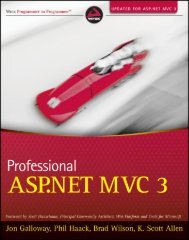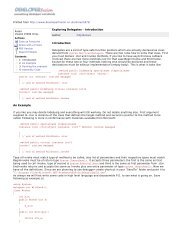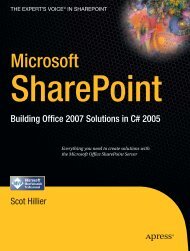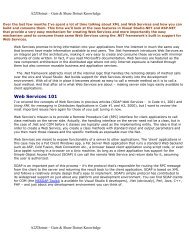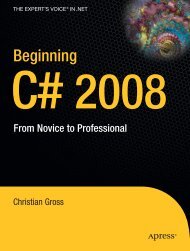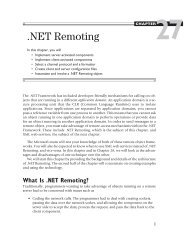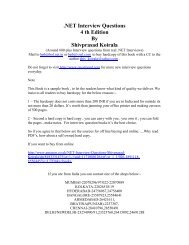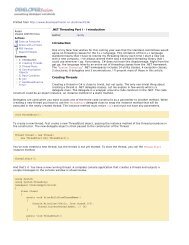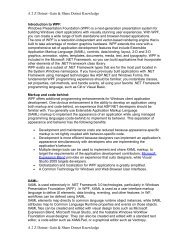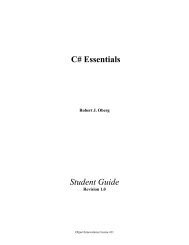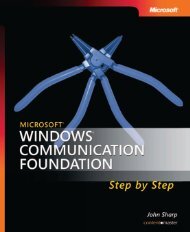DOT NET Interview Questions - DotNetSpider
DOT NET Interview Questions - DotNetSpider
DOT NET Interview Questions - DotNetSpider
Create successful ePaper yourself
Turn your PDF publications into a flip-book with our unique Google optimized e-Paper software.
√<br />
√<br />
√<br />
√<br />
√<br />
√<br />
New Data Types: These include: bigint, an 8-byte integer type; sql_variant, a<br />
data type that allows the storage of data of different data types; and the table<br />
data type, which allows applications to store results temporarily for later use.<br />
INSTEAD OF and AFTER Triggers: There are INSTEAD OF and AFTER<br />
Triggers in SQL Server 2000. INSTEAD OF triggers are executed instead of<br />
the INSERT, UPDATE or DELETE triggering action. AFTER triggers are<br />
executed after the triggering action.<br />
Cascading Referential Integrity Constraints: There are new ON DELETE and<br />
ON UPDATE clauses in the REFERENCES clause of the CREATE TABLE<br />
and ALTER TABLE statements.The ON DELETE clause controls what<br />
actions are taken if you attempt to delete a row to which existing foreign keys<br />
point. The ON UPDATE clause defines the actions that are taken if you<br />
attempt to update a candidate key value to which existing foreign keys point.<br />
The ON DELETE and ON UPDATE clauses have two options:<br />
NO ACTION :-NO ACTION specifies that the deletion/update<br />
fail with an error.<br />
CASCADE :-CASCADE specifies that all the rows with foreign<br />
keys pointing to the deleted/updated row are also deleted/updated.<br />
32 CPU and 64GB Memory Support: SQL Server 2000 Enterprise Edition<br />
running under Windows 2000 DataCenter can support up to 32 CPUs and up<br />
to 64GB of physical memory (RAM) on a computer.<br />
XML Support: SQL Server 2000 can use XML to insert, update, and delete<br />
values in the database, and the database engine can return data as Extensible<br />
Markup Language (XML) documents<br />
(B)What is the difference between a HAVING CLAUSE<br />
and a WHERE CLAUSE?<br />
You can use Having Clause with the GROUP BY function in a query and WHERE<br />
Clause is applied to each row before they are part of the GROUP BY function in a query.<br />
(B) What is difference between UNION and UNION ALL<br />
SQL syntax ?<br />
206



